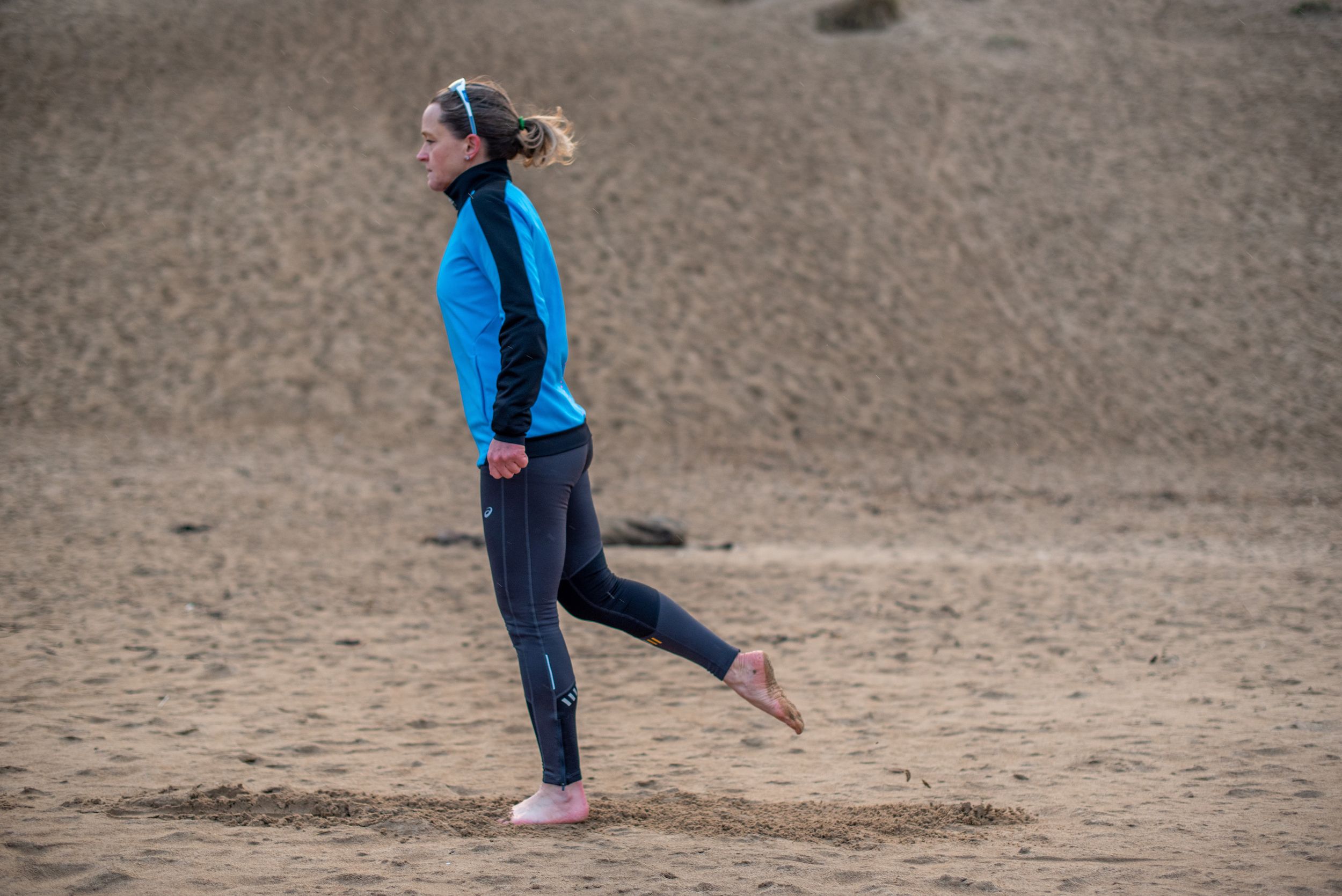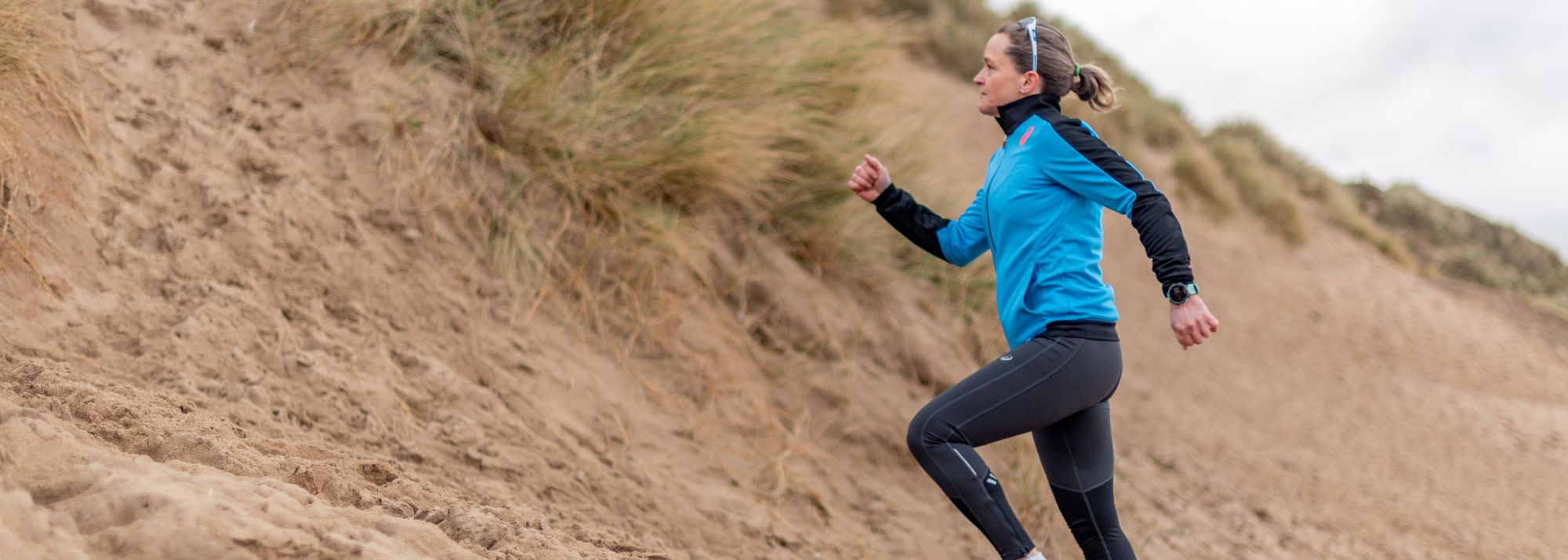Mara Yamauchi's sand drills (© Mark Clinton Johnson)
Happy New Year!
The start of a brand new year is often a time of fresh beginnings, setting goals and new year’s resolutions. If you are looking to refresh your running routine, I have a quick and fun conditioning routine that you might want to try – running drills on sand. This short session includes a variety of exercises which are all useful for runners. It starts with working your feet and lower limbs, then builds into more dynamic, full-body exercises.
Why use sand?
When we think about running and sand, there is a tendency to think immediately of simply running on sand, for example using a beach to do a steady run, intervals, or even hills on sand dunes. But sand is also an excellent surface for drills. The softer surface means your tissues will have to work harder; uneven sand makes it more challenging to keep your balance; and, if you exercise in bare feet, you will stimulate good proprioception in your feet as your skin touches the sand.

Naturally, it is more difficult to be springy on sand compared to a hard surface, so save any drills that demand bounce and quick ground contact for other surfaces. This session does not need a large area, so if you are not near the seaside, the long jump pit at your local track or any small area of sand are just as good.
This session is best performed in bare feet. But that means safety is everything, so it’s vital to check the sand for any debris before starting. Wet sand and dry sand offer very different surfaces if you have that choice, but to be honest either is fine. If the weather is cold, I always opt for dry sand! The distance over which you perform each drill can be flexible. Aim for six to seven out of ten in terms of effort for each drill. If you want to lengthen the session, I recommend doing each exercise once, then repeating the entire set two or three times.
Here is my menu for drills on sand:
1. Scrunch toes: stand still and scrunch, working your arches
2. Transfer sand: pick up small amounts of sand with your toes and move it
3. Walk on tip-toes: this really works your calf muscles
4. Walk on heels: lift your entire foot except your heels off the ground
5. Roll heel to toe walk: exaggerated rolling walk from heel plant to toe-off
6. Flick sand forwards: use your feet to dig a little sand with each step
7. Flick sand backwards: walk backwards, digging sand with each step
8. Flick sand sideways: walk sideways, flicking sand with leading foot; repeat in other direction
9. Trot forwards: maximise movement at your ankles
10. Trot backwards: again use your ankles as much as possible
11. Trot sideways: as above but sideways; repeat in other direction
12. Lunge walk: step into a lunge forwards, repeat with every step
13. Hops: simple hopping forwards, first on right foot, then on left
14. Bunny hops: two-legged jumps forwards from standing
This is a basic menu which you could add to and develop, for example: one-leg stands with your eyes closed, skipping (for height and distance), bounding, straight-leg running, running with very small & fast steps, running with folding legs underneath you.

Variety is everything with drills because it challenges your brain-muscle co-ordination in a multitude of ways. If you find any drills much too difficult, it is more useful to focus on drills you can do and work at them. Having access to sand may be hit-and-miss, so this routine can be performed on an ad hoc basis. If you are lucky enough to be near sand, then I suggest trying this session twice a week. Enjoy!
Mara Yamauchi for Be Active















